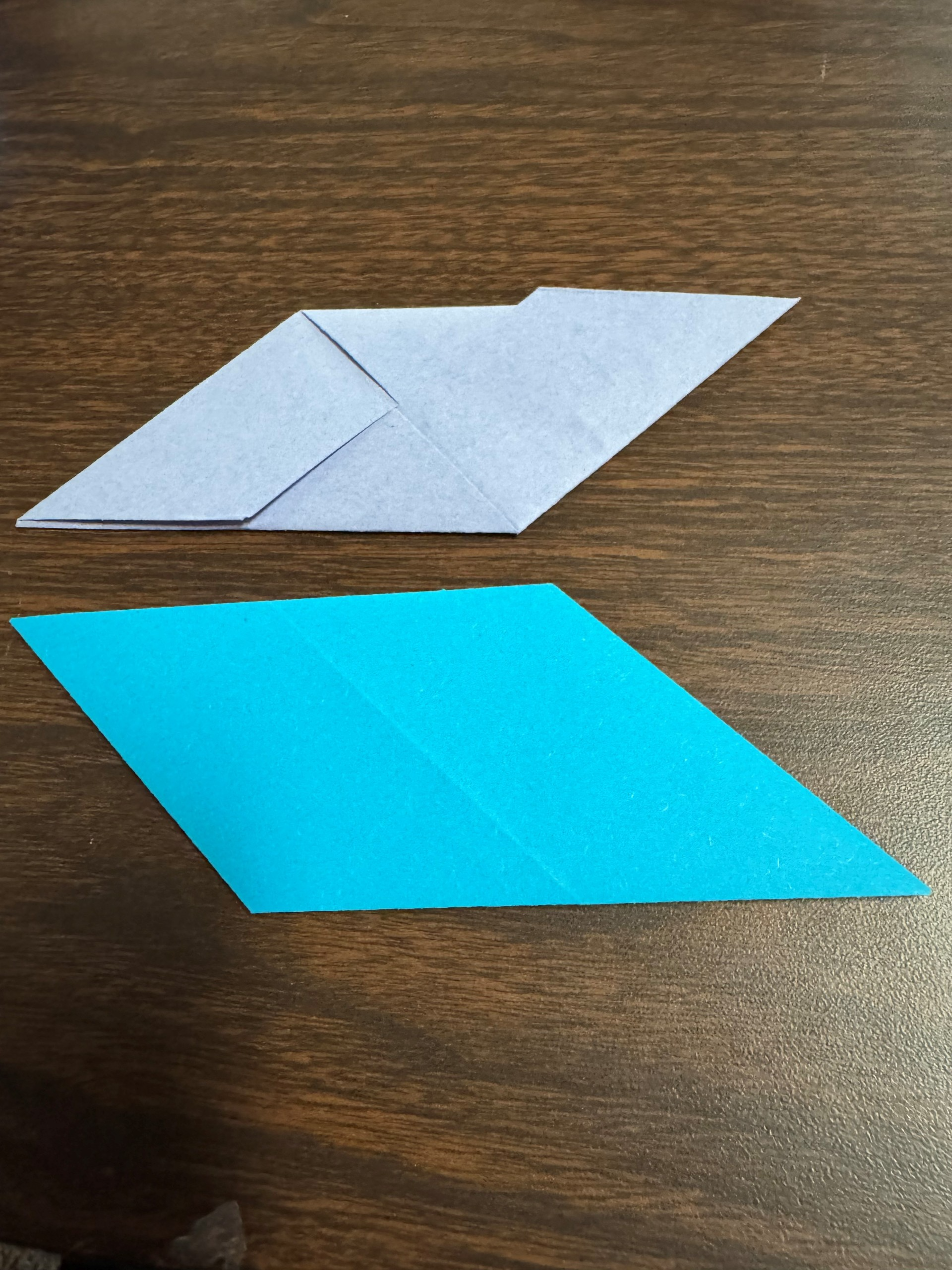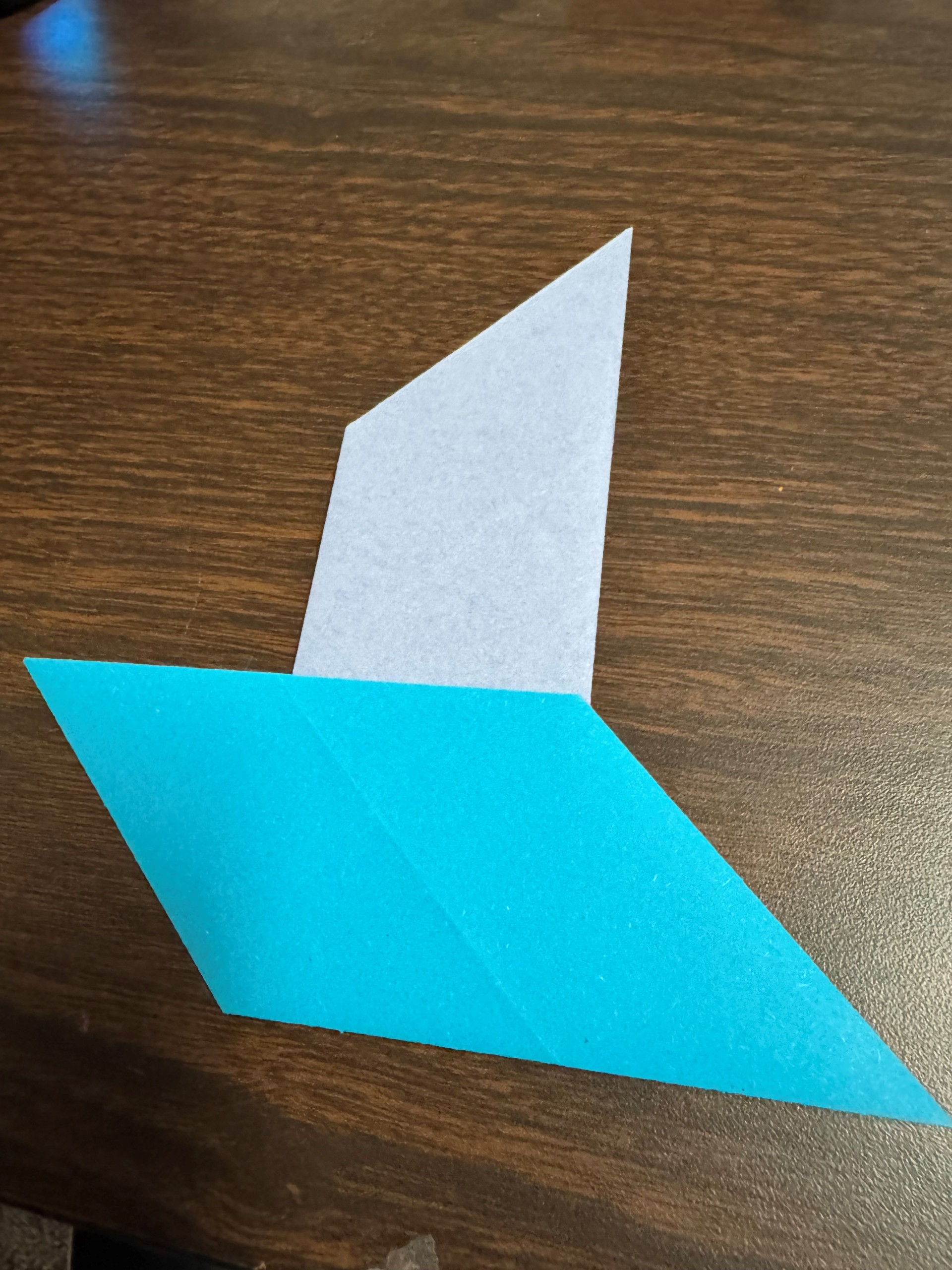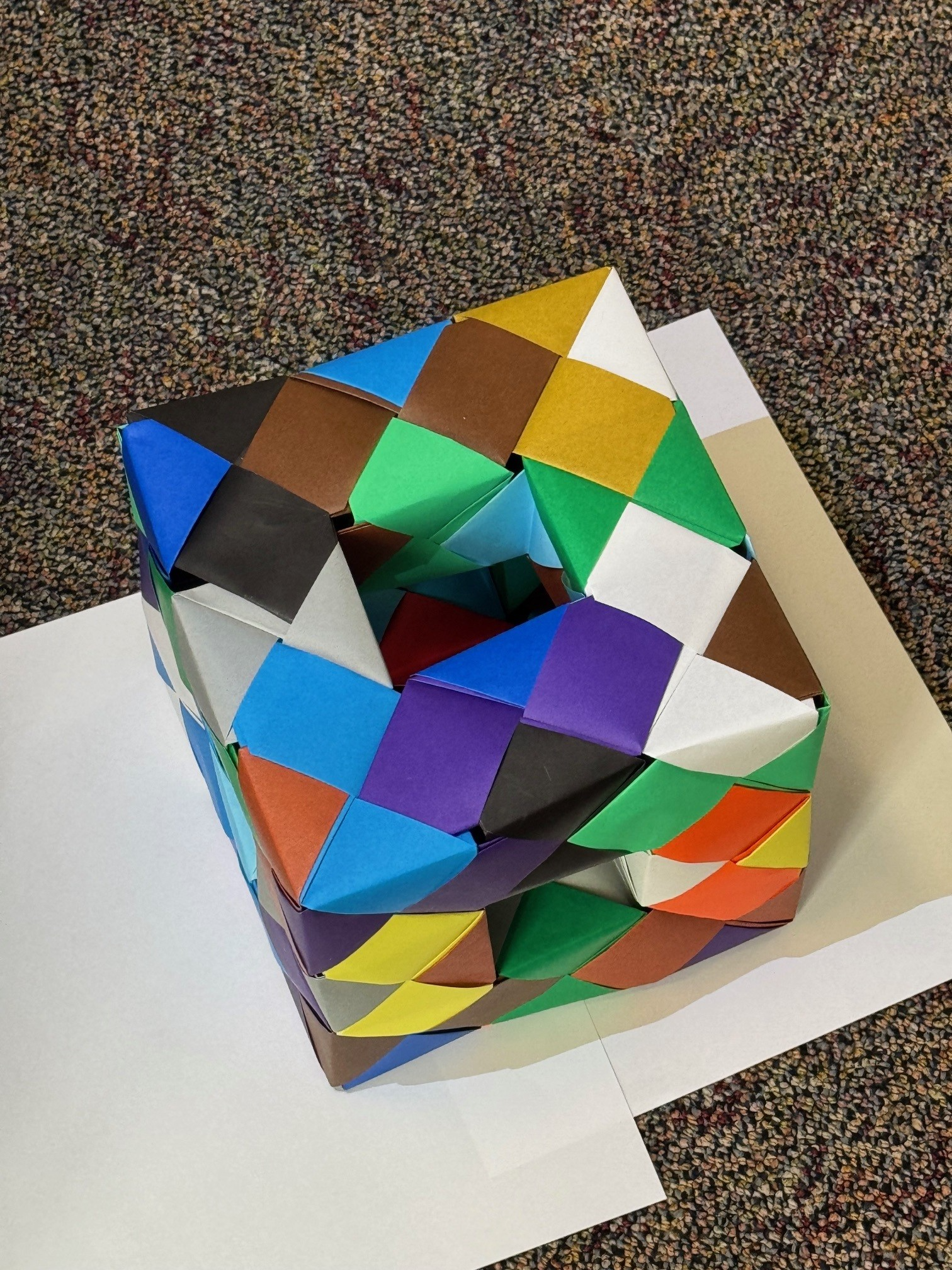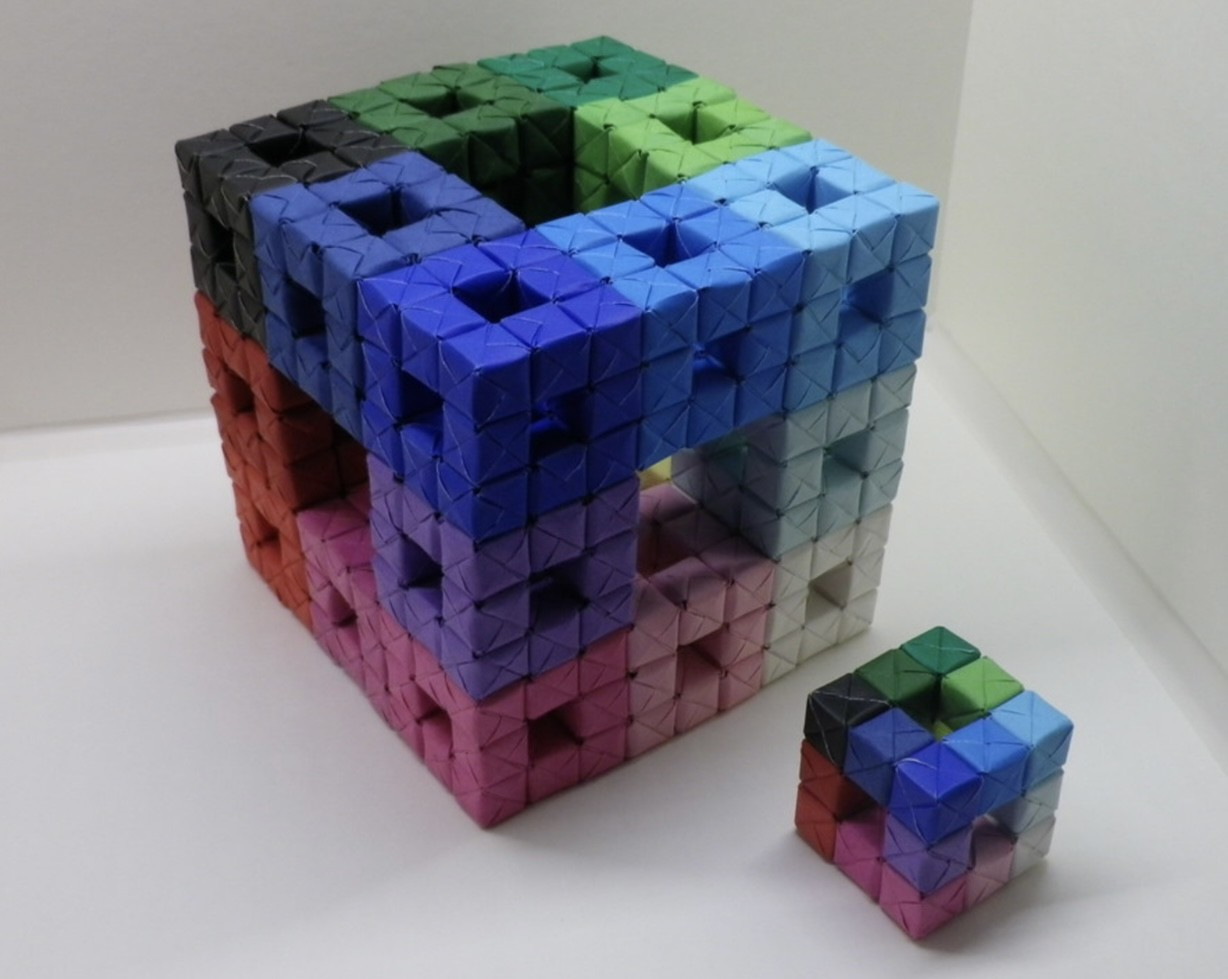Day 4 Origami, Music (Lecture, and Talent Show), and Individual Round
July 23, 2025
The first lecture of the day brought back a perennial favorite Math League presenter, Paul Ellis, who led the students through a construction using modular origami. This was a big project that required extremely precise work as a team. First, students were led through the proper way to construct each modular unit from a single piece of origami paper. These individual modules, known as Sonobe units, involved precise folding, implicating the principle of rotational symmetry.

Teams then constructed 72 Sonobe units which were similar (but not identical in terms of final creasing). Uniform work among team members was crucial! Once all the Sonobe units were completed, they fit together perpendicularly.

Teams were challenged to combine them to form a large 3-dimensional structure known as a Menger sponge, a fractal cubic construction. (Some of you may be familiar with fractal constructions from the 2-dimensional fractal with the overall shape of an equilateral triangle known as a Sierpiński triangle.) The physical description of a Menger sponge is: a cube divided into 27 smaller cubes, but with the center cube and middle cube of each face removed. The result was quite impressive!

Note that the students were probably happy that they were constructing only a level 1 Menger cube; a level 2 Menger cube would have required 2400 sonobe units!!

After Paul Ellis’ lecture, we held our first of two individual question rounds in the Social Science Building. In these rounds, students are given seven minutes to solve each of 5 difficult questions working on their own. Each question is worth 10 points. The fun for those of us watching the students comes when we collect their answers, announce the answer, and hear them cheer if they get the question correct. The questions are quite challenging, but our participants continued to impress us with their ability to solve many of them.
After lunch Dr. James Myer of the City University of New York spoke to our students.. I always look forward to his talks since he is passionate about both music and mathematics (two of my favorite topics) and he is able to communicate his enthusiasm for these subjects very effectively with our students. James fancies himself a mathemusician—a term I had never heard before I met James. As many of you may know, mathematical ability and musical ability seem to go together (although you would never believe that if you heard me try to play the piano!). You can read about James’ background at his website, James Myer.
James began by asking our participants, “Who plays a musical instrument?” and was impressed to see a sea of hands. Subsequently, James asked, “Who believes mathematics and music are related?” Many students raised their hands.
James kicked off the actual talk by showing an animation displaying Bach’s “Crab Canon” played forward, backward, forward & backward simultaneously, and finally, forward & backward simultaneously on a Möbius strip, a miraculous surface with only one side. The students and I were amazed at how wonderful this piece of music sounded no matter which direction it was played.
Thoroughly convinced that musical notation is simply a graph of frequency over time, we proceeded to explore the claim that harmony is frequency in ratio. We heard how various frequency ratios sound together, and learned some ratios are more enjoyable than others. Generally, we tend to enjoy a ratio (sufficiently close to) a “small” rational number, i.e. the numerator & denominator are each small. However, there is sometimes a context in which “bigger” ratios sound pleasant, e.g. in jazz harmony. James demonstrated this idea while playing chords on his electric bass.
What followed was an explanation of the background underlying the award-winning “mathemusical” app/game, named JirafaGraph, that James designed, brought to life by James’ friend, Kyle McGrath. By numbering the notes C = 0, C#/Db = 1, … B = 11, we afford ourselves a mathematical perspective on chromaticism. What’s fascinating is that this perspective suggests 0 = 12, and so while performing arithmetic operations, e.g. 7 + 6, we must remember 12 = 0: 7 + 6 = 13 = 12 + 1 = 0 + 1 = 1 (mod 12). Equipped with the requisite background, James demonstrated how to play the game, and then allowed the audience to download the game and play themselves for a little while. Everyone seemed to enjoy!
Along the way, three prizes were awarded to three students who provided the correct answers to various questions James posed during his talk.
After James’ lecture, we returned to the Social Science Building for our second round of Individual questions for the day. The afternoon questions were somewhat more difficult than the morning ones, but our students continued their quest to find the right answers to these questions.
In the evening we held the second part of our talent show. Once again, I was dazzled by the variety and range of different talents our participants displayed. We had the usual gang of pianists (what talent they displayed!), but we also had a ukulele player, a comedian, and a ventriloquist, not to mention the participant who invited anyone who wanted to dance to come on stage and dance to his accompaniment.
To get a feeling for the kind of jokes we heard, here’s one from our comedian and one from our ventriloquist:
“What does a baby parabola drink? Quadratic formula.” (It took me almost a minute to “get” this one!)
“Why did the golfer change his pants? Because he had a hole in one.” (This one I “got” immediately.)
The talent show ended with two acts by our counselors. First, Haley Kooyman entertained us with some magic/mentalist tricks that amazed all of us. Then eight of our counselors showed off their synchronized dance skills. It’s always a thrill for our campers to see their counselors perform at out talent shows. No, I did not sing my famous novelty song!
点击这里查看 Day 4 照片(部分)
